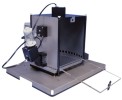Authors
J.B. Faure, J. E. Marques-Carneiro, G. Akimana, B. Cosquer, A. Ferrandon
Lab
Faculty of Psychology, Strasbourg, France
Journal
Epilepsia
Abstract
Objective
Temporal lobe epilepsy is a relatively frequent, invalidating, and often refractory neurologic disorder. It is associated with cognitive impairments that affect memory and executive functions. In the rat lithium-pilocarpine temporal lobe epilepsy model, memory impairment and anxiety disorder are classically reported. Here we evaluated sustained visual attention in this model of epilepsy, a function not frequently explored.
Methods
Thirty-five Sprague-Dawley rats were subjected to lithium-pilocarpine status epilepticus. Twenty of them received a carisbamate treatment for 7 days, starting 1 h after status epilepticus onset. Twelve controls received lithium and saline. Five months later, attention was assessed in the five-choice serial reaction time task, a task that tests visual attention and inhibitory control (impulsivity/compulsivity). Neuronal counting was performed in brain regions of interest to the functions studied (hippocampus, prefrontal cortex, nucleus basalis magnocellularis, and pedunculopontine tegmental nucleus).
Results
Lithium-pilocarpine rats developed motor seizures. When they were able to learn the task, they exhibited attention impairment and a tendency toward impulsivity and compulsivity. These disturbances occurred in the absence of neuronal loss in structures classically related to attentional performance, although they seemed to better correlate with neuronal loss in hippocampus. Globally, rats that received carisbamate and developed motor seizures were as impaired as untreated rats, whereas those that did not develop overt motor seizures performed like controls, despite evidence for hippocampal damage.
Significance
This study shows that attention deficits reported by patients with temporal lobe epilepsy can be observed in the lithium-pilocarpine model. Carisbamate prevents the occurrence of motor seizures, attention impairment, impulsivity, and compulsivity in a subpopulation of neuroprotected rats.
BIOSEB Instruments Used:
5-9 holes attention processes box (LE509)

 Douleur - Allodynie/Hyperalgésie Thermique
Douleur - Allodynie/Hyperalgésie Thermique Douleur - Spontanée - Déficit de Posture
Douleur - Spontanée - Déficit de Posture Douleur - Allodynie/Hyperalgésie Mécanique
Douleur - Allodynie/Hyperalgésie Mécanique Apprentissage/Mémoire - Attention - Addiction
Apprentissage/Mémoire - Attention - Addiction Physiologie & Recherche Respiratoire
Physiologie & Recherche Respiratoire
 Douleur
Douleur Système Nerveux Central (SNC)
Système Nerveux Central (SNC)  Neurodégénérescence
Neurodégénérescence Système sensoriel
Système sensoriel Système moteur
Système moteur Troubles de l'humeur
Troubles de l'humeur Autres pathologies
Autres pathologies Système musculaire
Système musculaire Articulations
Articulations Métabolisme
Métabolisme Thématiques transversales
Thématiques transversales SFN2024: Venez rencontrer notre équipe sur le stand 876 à Chicago
SFN2024: Venez rencontrer notre équipe sur le stand 876 à Chicago 